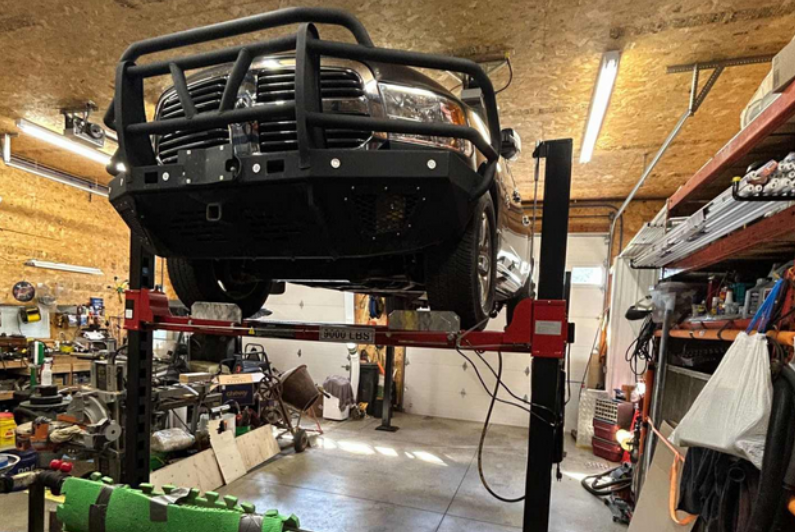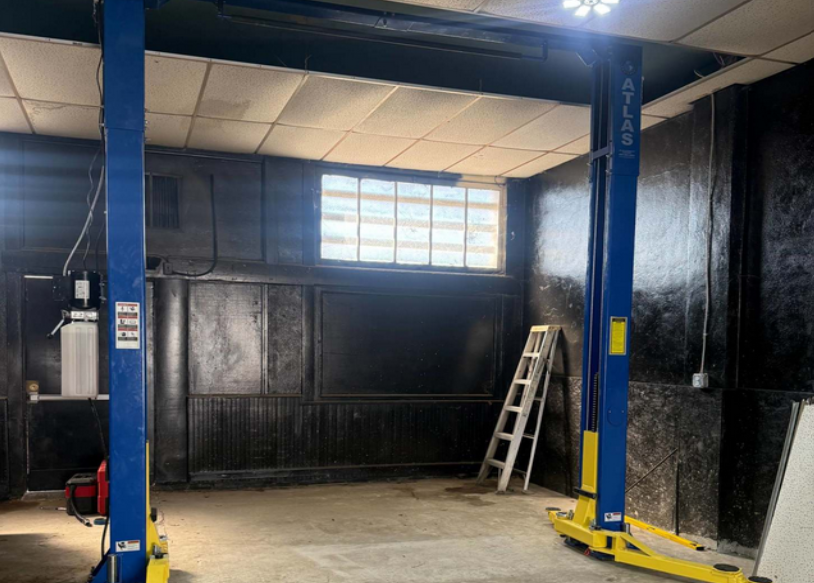Guide to 2 Post and 4 Post Lifts for Home Garages

Spend one Saturday installing the right lift, and you can double your parking space, breeze through brake jobs, and finally banish the jack stands that are gathering dust in the corner. Choose the wrong lift, and you’ll battle concrete anchors, ceiling-height surprises, and a storage layout that never quite works.
This guide compares 2-post and 4-post car lifts head-to-head so you can pick the setup that fits your garage, budget, and workflow, without guesswork.
We’ll cover how hobby-grade lifts work, space and safety requirements, real-world pros and cons, ballpark costs, and a decision matrix you can print and tape to the toolbox.
By the end, you’ll know exactly which lift style deserves that precious slab real estate-and what to do before the first bolt ever meets concrete.
How Car Lifts Work in a Home Garage
Both hydraulic 2-post car lifts and 4-post lifts from HeavyLift Direct raise a vehicle on steel posts using hydraulic rams powered by an electric pump, 120V or 240V, depending on the model. A mechanical lock ladder inside each column engages automatically as the lift rises, acting as a failsafe should system pressure drop.
Key anatomy you’ll meet in the spec sheets:
- Hydraulic cylinder(s): Provide the lifting force
- Equalizer cables/chains: Keep platforms level
- Safety locks: Engage in 4–6 inch intervals
- Power unit: Motor, pump, reservoir, and control lever or button
Power unit includes the motor, pump, reservoir, and control lever or button. Regardless of style, treat a lift like a power tool. Follow torque specifications, use compatible adapters, and inspect cables, pulleys, and locks before every climb.
Snapshot Overview of Each Lift Type
Use this quick guide to compare capacities, footprints, anchoring needs, and best uses before choosing the right lift for your garage:
2-Post Car Lift
This summary highlights the key traits of a two-post car lift for everyday garage use:
- Typical capacity: 9,000 – 12,000 lb hobby models
- Footprint: 11–12 ft wide and 10–12 ft clear ceiling
- Anchoring: 4–6″ 3,000 psi concrete slab required
- Access: Full wheels, brakes, and underside exposed
- Best for: Repairs, mods, tire rotations, shops with narrow bays
Review these points and choose a lift that fits your space safety needs and workload.
4-Post Car Lift
This summary outlines the key features of a four-post car lift for home garage use:
- Typical capacity: 8,000 – 14,000 lb hobby models
- Footprint: 8–10 ft wide × 17–19 ft long; 9–10 ft ceiling
- Anchoring: None required; most include caster kit
- Access: Drive-on storage platforms; limited wheel work unless using bridge jacks
- Best for: Vehicle storage, daily-driver convenience, renters needing portability
Consider these points and pick a lift that matches your storage plans, mobility needs, and everyday convenience.
Deep-Dive Feature Comparisons

If you’re stacking a project car over the winter and want to keep the daily driver underneath, a 4-post shines. Drive on, pull the lever, set the locking positions, and you’ve gained a parking space for the cost of one bay.
Optional drip pans keep gear-oil surprises off the car below, and caster kits let renters roll the entire lift to a new house without patching holes in the concrete.
A 2-post can store a car, but dangling wheels mean flat-spot anxiety on long sits, and the open undercarriage exposure invites dust and debris. For pure storage and stacking, the 4-post takes pole position.
Convenience & Everyday Workflow
When speed matters, such as during an oil change on a lunch break or a quick brake job, arm placement on a 2-post lift can feel fiddly.
You must kneel, swing the arms into position, adjust the rubber pads to the correct lift points, and double-check the vehicle’s center of gravity before lifting. Even so, this setup is invaluable for serious repair work.
By contrast, a 4-post lift lets you simply drive on, set the mechanical locks, and gain access to the underside, excluding the wheels. That simplicity is often worth the extra floor length for owners who rotate vehicles daily on and off the lift.
Safety Considerations
Both lift types are safe when installed and used correctly, yet they manage the load differently. On a 2-post, the vehicle hangs from four arms. Mis-adjusting a pad or failing to find the correct lift point can risk an imbalance, so it’s crucial to follow manufacturer guidelines, especially on unibody cars.
A 4-post supports the vehicle on its tires across two runways, distributing the weight evenly across four columns. This is a blessing for novices, but a false sense of invincibility can creep in. Always chock the wheels and engage all secondary locks.
Garage Space & Ceiling Height
Measure three times, drill once. The main squeeze for a 2-post is width, not length. The centerline of the columns typically lands around 120–144 inches apart, and you’ll need 10–12 feet of clear height to accommodate the top of the car at full rise.
A 4-post’s columns are often shorter (some under 9 feet), making ceiling conflicts rare, but its runway length (17–19 feet) may push you into driveway territory when loading longer trucks.
Sketch your garage in chalk, including opener tracks, loft storage, and lighting fixtures to avoid day-of surprises. Concrete matters, too. Hobby lifts specify a minimum of 4-inch, 3,000 psi slab, though 5–6 inches offers a better buffer for 10k-plus lifts.
Renters relying on thin builder-grade slabs often steer toward 4-post units to dodge anchors entirely.
Installation & DIY Feasibility
A competent DIYer with a rotary hammer, torque wrench, and a buddy can install most 2-post lifts in 6–8 hours. The process involves layout and squaring, drilling 10–12 anchor holes, erecting the columns with the crossbar, running equalizer cables and hydraulics, and finally filling, bleeding, and testing the system.
A 4-post typically ships in larger sub-assemblies. Bolt the runways, stand the columns, install the cross-beams, plug it into a 120V outlet, and you’re lifting by lunchtime, anchors required.
For electrical needs, 2-post motors often require a dedicated 220V/30A circuit, while many 4-post run on a standard household 110V outlet.
Weight Capacity & Vehicle Fit
Capacity labels can hide nuance. A “9,000 lb” 2-post may safely hoist a half-ton truck if the arms are positioned on the factory lift points.
Wide-track performance cars sometimes need low-profile pads or extended arms to reach the proper spots. A hobby 4-post rated at 9,000 lbs handles most sedans and CUVs.
If you own a three-quarter-ton pickup, step up to 12,000 lbs. Also, compare runway width to avoid tires running off the edge and check the inside clearance between columns so your mirrors clear.
Extra Functionality & Accessories
Plan for accessories while pricing. A bridge jack may push a 4-post’s final tally above a comparable fully-featured 2-post. Common add-ons include:
- Wheel-trie trays: These are used to catch loose lug nuts during rotor swaps.
- Jack Bridges: Add wheel-off capability to 4-posts.
- Drip Pans: A must-have for storing vehicles on a lift.
- Caster Kits: Allow you to roll 4-posts around the garage or out of the way.
- Rolling Bridge Jacks: Essentially convert runways into a mini 2-post for axle work.
8-Point Pre-Lift Safety Checklist
- Inspect cables and chains for frays or damage.
- Confirm safety locks engage properly at all stop heights.
- Verify that arm pads or runways contact the designated lift points on the vehicle.
- Check the hydraulic fluid level in the reservoir.
- Look for any oil leaks at cylinder seals or hose fittings.
- Ensure no loose objects are on the runways or under the car.
- Chock the wheels (4-post) or set the parking brake (2-post).
- Raise the vehicle to the first lock level, then re-inspect its stability before raising it to full height.
Expert Tips & Common Mistakes
- Re-torque anchor bolts after 24 hours; concrete creep can loosen day-one installations.
- Test-fit your lift with the garage-door openers-4-post columns often interfere with trolley rails.
- Verify slab thickness at each anchor point, not just near the wall; contractor pour lines can vary.
- On 2-posts, always keep the arms symmetrical; uneven extension can stress a car’s frame.
A longtime forum member summed it perfectly: “Measure the ceiling, your ego, and your wallet-in that order.”
Conclusion & Action Steps
Picking between a 2-post and 4-post lift depends on how you plan to use it. If you need complete wheel-off access for weekend wrenching in a narrow bay, a 2-post is the undisputed champion.
If you want hassle-free, drive-on parking for a collector car plus occasional oil changes, a 4-post earns its keep.
Before you order, measure your slab, map the ceiling, price any electrical work, and insist on ALI-certified products. Your back and your car’s bumper will thank you.
